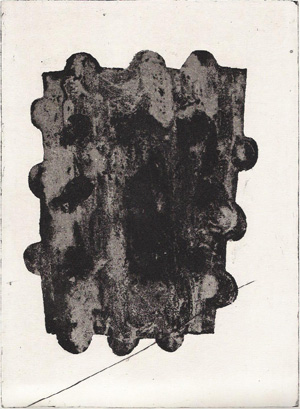|
|
||||||
| N L | Philippe Vandenberg, etching for Exil de Peintre, Ergo Pers, 2003
|
|||||
Exil de peintre, is an artist's book with 64 etchings and an unpublished text La lettre au nègre (Letter to the Nigger) by Philippe Vandenberg. Exil de peintre is published by Ergo Pers, a publisher of artists' books and livres de peintres, in which writers and visual artists are brought together. Armando, Hugo Claus and Pierre Alechinsky, Gerrit Kouwenaar and Constant, Roland Jooris and Raoul De Keyser, Cees Nooteboom, John Ashbery and Jürgen Partenheimer are some of the artists who contributed to an Ergo Pers edition. Exil de peintre was a creation of Philipe Vandenberg, Henri Hemelsoet and Rein Ergo and was published in a limited edition of 33 copies.
|
||||||
|
 |
 |
 |
|||
Philippe Vandenberg, Exil de Peintre, Ergo Pers, 2003, the final etchings
|
||||||
|
The oeuvre of Philippe Vandenberg (1952-2009) is characterized by a restless introspective search. Destruction and the inevitable renewal that followed was a tried and tested method. Vandenberg could only reach a state of wonder by constantly questioning his work, resolutely putting it behind him and starting over. The final etchings were gloomy, on the colorful red and purple flowers he prints a deep dark black surface, a figure that seems to refer to a Romanesque floor plan. The etching technique developed especially for Philippe Vandenberg allowed him to create an almost painted surface with great depth.
|
|||||
|
||||||